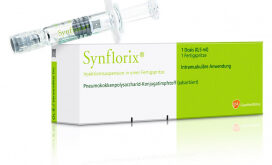Antibiotics play a crucial role in combating bacterial infections, and one such medication making waves in the medical field is ZINACEF INJ 750MG 1VIAL. In this comprehensive guide, we will delve into the various aspects of ZINACEF, from its composition to user experiences, and shed light on its significance in the realm of antibiotics.
What is ZINACEF?
ZINACEF, generically known as cefuroxime, stands as a formidable antibiotic used to treat a spectrum of bacterial infections. Its mechanism of action involves inhibiting bacterial cell wall synthesis, rendering it an effective weapon against a variety of pathogens. Conditions such as respiratory tract infections, skin infections, and urinary tract infections are among those that succumb to the potency of ZINACEF.
Dosage and Administration
For optimal results, it’s crucial to adhere to the prescribed dosage of ZINACEF. The recommended dosage may vary depending on the severity of the infection and the patient’s overall health. Intravenous administration is common, especially in hospital settings, and precautions should be taken to avoid potential side effects such as allergic reactions or gastrointestinal disturbances.
Understanding Cefuroxime
Cefuroxime, the active ingredient in ZINACEF, belongs to the cephalosporin class of antibiotics. What sets it apart is its broad-spectrum activity against both Gram-positive and Gram-negative bacteria. Doctors often prefer ZINACEF over alternative medications due to its efficacy and the ability to treat a wide range of infections.
Efficacy of ZINACEF
ZINACEF has garnered praise for its high success rates in treating bacterial infections. Patient testimonials highlight the rapid relief and minimal side effects associated with this antibiotic. When compared to other antibiotics in its class, ZINACEF demonstrates comparable efficacy, positioning itself as a reliable choice for medical professionals.
Safety Measures and Considerations
While ZINACEF is generally well-tolerated, allergic reactions are a concern, and precautions must be taken. Patients with known allergies to cephalosporins or penicillins should exercise caution. Additionally, interactions with other medications should be carefully evaluated to ensure patient safety.
ZINACEF in Clinical Settings
Medical professionals commonly prescribe ZINACEF in various clinical scenarios. Its use extends beyond outpatient treatment, finding a significant place in hospitals for intravenous administration. Understanding the role of ZINACEF in different medical settings provides valuable insights into its versatility.
Purchasing ZINACEF
Availability in pharmacies is an essential consideration for patients. ZINACEF is a prescription medication, and obtaining it requires consultation with a healthcare provider. Patients should also explore cost considerations and inquire about insurance coverage to ensure affordable access to this antibiotic.
Patient Education
Counseling patients on ZINACEF is a crucial aspect of its administration. Ensuring adherence to the prescribed regimen and addressing common concerns can enhance the effectiveness of the treatment. Open communication between healthcare providers and patients fosters a collaborative approach to recovery.
Future Developments in Antibiotics
As antibiotic resistance becomes a global concern, ongoing research and innovations in antibiotic medications, including ZINACEF, are vital. Exploring potential advancements and the evolving role of antibiotics in modern medicine paves the way for a more robust approach to bacterial infections.
Impact on Global Health
ZINACEF’s contribution to global health initiatives is significant. Addressing antibiotic resistance requires collaborative efforts, and ZINACEF plays a role in this collective endeavor. Understanding its impact on global health provides a broader perspective on the importance of responsible antibiotic use.
User Experiences and Reviews
Online reviews and forums offer a platform for users to share their experiences with ZINACEF. Real-life stories and insights provide valuable information for potential users, creating a supportive online community where individuals can learn from each other’s journeys with this antibiotic.
ZINACEF and Pediatric Use
Guidelines for administering ZINACEF to children differ from those for adults. Pediatricians play a crucial role in recommending safe and effective dosages for younger populations. Parents should be informed about the specific considerations and precautions associated with pediatric use.
Frequently Asked Questions (FAQs)
- What is the recommended dosage for ZINACEF?
- The recommended dosage varies based on the severity of the infection and the patient’s health. Consult your healthcare provider for personalized guidance.
- Can ZINACEF be taken with other medications?
- While ZINACEF is generally well-tolerated, it’s essential to inform your healthcare provider about all medications you are taking to avoid potential interactions.
- Are there any long-term side effects associated with ZINACEF?
- Long-term side effects are rare, but it’s crucial to report any unusual symptoms to your healthcare provider promptly.
- How quickly does ZINACEF show results?
- The onset of action varies, but many users experience relief within a few days of starting the medication.
- Is ZINACEF safe for pregnant women?
- Pregnant women should consult their healthcare provider to weigh the benefits and risks before using ZINACEF. Individual circumstances may vary.
 Tabletsuses Tabletsuses
Tabletsuses Tabletsuses


